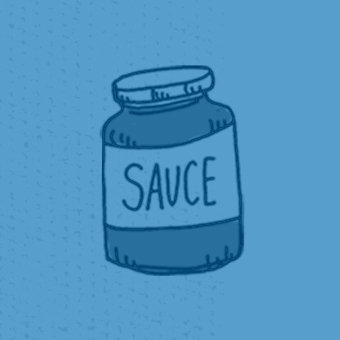We have been talking a lot about growth here at Blue Daring. It’s the theme of our latest campaign. This got me thinking about my own growth as a design professional and the different phases my career has taken in the past decade. Looking back, the choice to become a designer was easy, I knew that I wanted to be a designer before I even knew what graphic design was. Ten years ago the landscape of design was completely different, the web was still in its infancy, Apple was just rising out of its own ashes and print was still king. My education taught me the basic principles of design and 10 years of experience – across what is now print, web, and most recently a public display case – taught me the rest.\n\nHere is a compilation of 10 things that I have learned in the past 10 years: \n\n1. Find a good mentor. This is especially important for young designers, because though they may be filled with a lot of knowledge, there is a lot of wisdom and grace involved with working with clients, managing a project, taking criticism and re-working a concept. None of which are taught in school.\n\n2. Form follows function. This statement has always been open to argument. But when it comes to doing branding work for a client, specifically here at Blue Daring, the end goal is to create a design solution that fulfills the client’s strategic goals, not just look good. This solution is usually driven by a marketing strategy or strategic planning session. Without knowing what the client wants, there is nothing to design, it would be like placing the proverbial cart before the horse.\n\n3. Triple check your work. Get in the habit early on of re-reading an email before sending it, reviewing files with a fine tooth comb before releasing to print, and making sure links are working before sending to a client. The devil is in the details, and at some point in every designer’s career, you will likely screw up.\n\n4. Burnout happens to everyone. To think creatively all the time is taxing. Sometimes a project can drag on forever, clients can be difficult or you just get into a rut. Sometimes simply putting on the headphones and listening to some music or going for a walk can be mind clearing. Having another creative outlet other then designing is essential for re-igniting the passion that made you choose the creative path in the first place.\n\n5. Learn the business side to creativity. This is helpful on so many different levels from reading a statement of work to pitching a new client. It is important to have a basic understanding of how businesses run and make money. This understanding sharpens your business acumen which can be a valuable addition to your company. It also helps you to understand strategy which is the driving force behind your design work.\n\n6. Read design blogs. Blogs can be wonderful resources for creative professionals – there are tutorials, talks by well known designers, and interesting perspectives on all things design.\n\n7. Beware of working with friends. It may sound like a good idea to work with a friend on a project, but tread very carefully when working with someone you know. There is always a chance that working together could wreck havoc on your friendship. There are a lot of variables to a project, starting with getting honest feedback. A good rule of thumb is to go by one degree of separation, which brings the risk factor down significantly. And if you do decide to go down this path, having a clear idea of what they want and what they should expect with a agreed upon time line makes for a solid start.\n\n8. Do something different. Inspiration can be found in the strangest of places. A change in scenery allows you to think differently. Getting out of your comfort zone can be difficult but most of the time I have found it to be tremendously rewarding and kick myself for not doing it more often.\n\n9. Learn how to present your work. In whatever field your in, the skill to eloquently present your work with both sound reason and great detail is invaluable. It’s tricky because design is something that takes hours to work out and there are a lot of mouse clicks that need to be accounted for. The phrase “because it looks good” never, I repeat never, goes over well. Clients want reasons and rationale for why something looks the way it does, they usually don’t have as active a right side of the brain as you do. Learn to articulate, it is an essential skill to grow.\n\n10. Be professional at all times. I think that creative professionals get a bad rep and are often portrayed as jeans-wearing, coffee-drinking slackers who can only be found on their iPhones and MacBook pros, which certainly is not the case. Have an understanding of dressing appropriately, speaking in meetings, and communicating with clients and co-workers. Know your boundaries and follow accordingly.\n\nI will be the first to admit that I am a work in progress and feel like I am always learning and trying to improve. I am curious what the next ten years will bring. I can only hope that I will still be doing work that I enjoy so much.
 More than Sauce: Branding Diversity
More than Sauce: Branding Diversity  Getting the Most Out of Conferences
Getting the Most Out of Conferences  How to Give Effective Design Feedback
How to Give Effective Design Feedback
I agree with all your points on what makes a good designer, and would like to add one more.\n\nSpeaking as a web developer, a designer who knows his/her way around a little web-speak is invaluable. I suppose this could be said of any medium that you are working in, that there are technological implications that a designer should always be aware of.\n\nAs a print designer, you need to know how a printing process works so you have an understanding of what happens after you hand off your files. As a web designer, knowing how your design transforms into code can make the transition much easier on both sides.